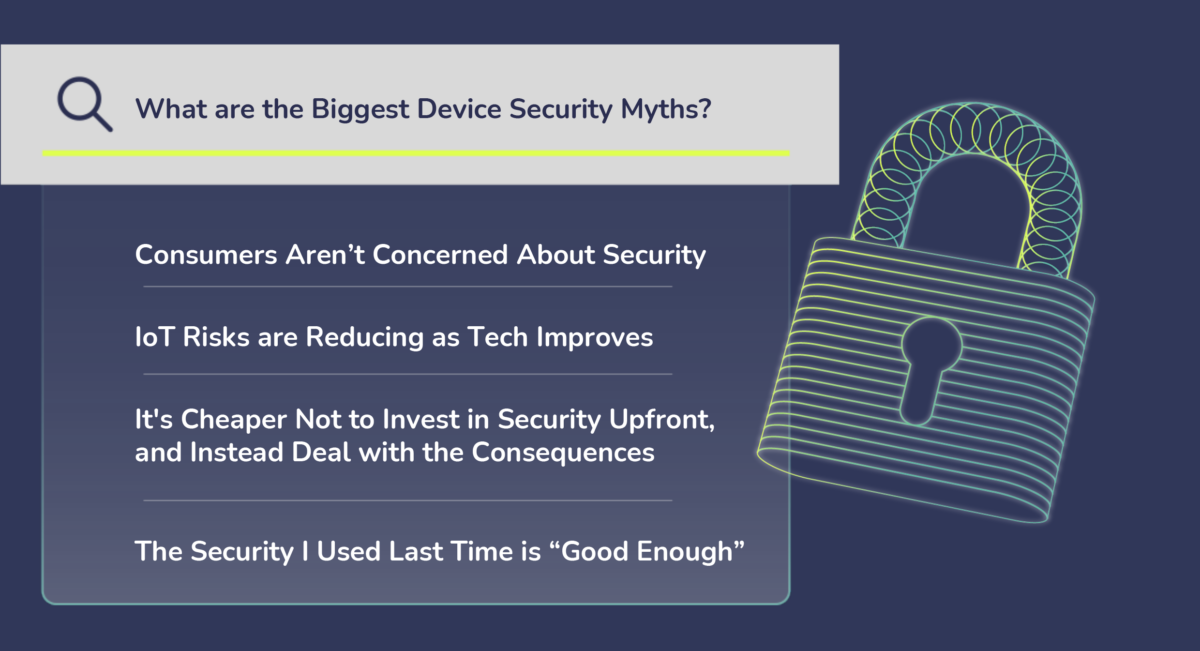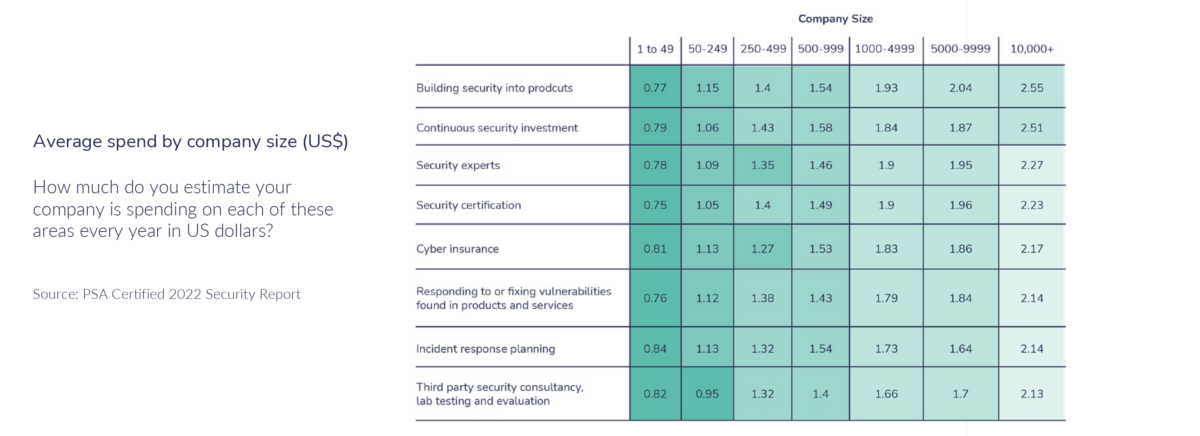As connected devices become increasingly enmeshed in our daily lives, it’s important to recognize that misconceptions are prevalent surrounding device security, even at the level of some of the manufacturers and retailers of these devices. These misconceptions exist due to a lack of awareness, the unavailability of reliable data, and the speed at which technology evolves.
Many people are unaware of the potential risks associated with these devices and hold incorrect assumptions about how to protect them. With the widespread use of connected devices across various industries, from healthcare to transportation, it’s vital to debunk the misunderstandings and help device security to scale.
In this blog post, we’ll explore common misconceptions about device security and shed light on the realities of securing these devices in today’s rapidly evolving technological landscape.

Myth #1: Consumers Aren’t Concerned About Security
False! Consumers now expect security to be integrated into every product due to the prevalence of hacks. A third of non-owners refuse to purchase smart devices due to security concerns, and over half don’t trust IoT devices to handle data respectfully. This lack of confidence impacts IoT and digital transformation adoption rates. Certification differentiates and highlights a commitment to security.
As awareness of security threats grows among consumers, they are increasingly demanding that security is an integral part of every product. This lack of trust and confidence has a negative impact on the adoption rates of IoT and digital transformation, causing delays in their deployment.
Quote
There’s this narrative that consumers just don’t care about security. The UK government has commissioned quite a lot of studies into this, and … it’s one of the most important characteristics they look for. But the problem we find is that consumers assume a product’s safe – because it’s for sale… The more transparent you can be with your consumer I think that’s setting us up for a better relationship between consumers, manufacturers, retailers, and regulators.
Myth #2: It’s Cheaper Not to Invest in Security Upfront, and Instead Deal with the Consequences
False! Although 52% of OEMs see security costs as a major obstacle, the cost of ignoring security is typically much higher. The cost of IoT device breaches is staggering, and they also result in significant damage to a company’s reputation and drain resources that could be better allocated elsewhere. Organizations face a daunting task in predicting and budgeting for securing the IoT. According to our security report, participants indicate that their companies allocate an average of US$1.56 million annually to incorporate security measures into their products, which surpasses all other budgetary expenditures.

Quote
We should not be saying that security is adding another cost on the bill of materials – it shouldn’t be considered like that. It should be necessary, like the power supply, you need to power the device and you need to have security as well.
Myth #3: IoT Security Risks Are Reducing As Tech Improves
False! Insecure devices are increasing hackers’ opportunities; The daily number of human-driven cyber incidents increased by 1.5 times in 2022 according to Kaspersky. The electronics industry must act to protect society as these risks threaten consumer confidence. Certification is essential to building trust in connected devices; 84% of tech decision makers value its role and independent measurement of conformance to best practices.
With the increasing deployment of insecure devices worldwide, hackers are presented with more opportunities than ever before, and the rise in risks is weakening consumer confidence. To address this issue, the electronics industry must act quickly, collaborate more effectively and use a common security framework.
Quote
As the sophistication of security attacks gets greater and greater, we need to do the same from a defense point of view. I think collaboration is the greatest armory we have to be able to do that.
Myth #4: The Security I Used for My Last Product Release Is Good Enough
False! The threat landscape for IoT devices is constantly evolving, and new vulnerabilities are frequently discovered as a result. Updating security measures can help address these vulnerabilities and protect devices from potential attacks. Neglecting to update and monitor IoT security can lead to serious consequences, including security breaches, loss of sensitive data, and damage to a company’s reputation. Therefore, it’s crucial to stay proactive and vigilant in securing IoT devices to prevent potential security risks.
Hackers and cybercriminals are constantly coming up with new ways to target devices, and even the most extensive security measures can be surpassed by skilled hackers. That’s why it’s essential to be part of an ecosystem that comprehends the principles of security best practices since no individual company can handle all threats in isolation. Proactively addressing IoT security from the outset can minimize reputation damage for a company whose IoT security has been compromised.
Quote
The sophistication of the attacks just grows over time and we on the silicon side must be ahead of the game because it takes three years to bake it in. So, we’ve got to look even beyond our customer’s requirements because essentially once our customers say they want it, we already must have the silicon done. My world is looking five years out. We need to know what the customer wants before they know they want it.
Myth #5: Security Has No Commercial Value
False! IoT security drives commercial value by protecting brand reputation, reducing operational costs, meeting regulatory compliance, and increasing customer loyalty. 96% of technology decision makers believe having security in their products positively impacts their bottom line. This can come in many forms, from the ability to deliver true differentiation in their product lines, to creating premium products tailored to a more sophisticated marketplace.
It’s clear that IoT security is not just an essential requirement for protection against potential cyber threats, but it also plays a vital role in driving commercial value. By safeguarding brand reputation, reducing operational costs, meeting regulatory compliance, and increasing customer loyalty, companies can positively impact their bottom line.
Quote
Security of a device is added value, in the market you have a better position. One of the biggest lessons I have learned, and the best advice I have is to get your foot in the door at an early stage.
The Future of The Ecosystem
Separating fact from fiction when it comes to IoT security is crucial for the health and success of the IoT ecosystem. The misconceptions surrounding IoT security can lead to serious security threats and breaches and it’s everyone’s responsibility to ensure that we are well informed and educated on the best security practices. It’s clear that the importance of IoT security will only continue to increase and touch more points of our daily lives from healthcare and finance, to agriculture and transport, and we all play a role in ensuring that the ecosystem is safe and secure.
United together, the ecosystem can work towards a future where all connected devices are built on a foundation of trust, and where collaboration and innovation can thrive.
